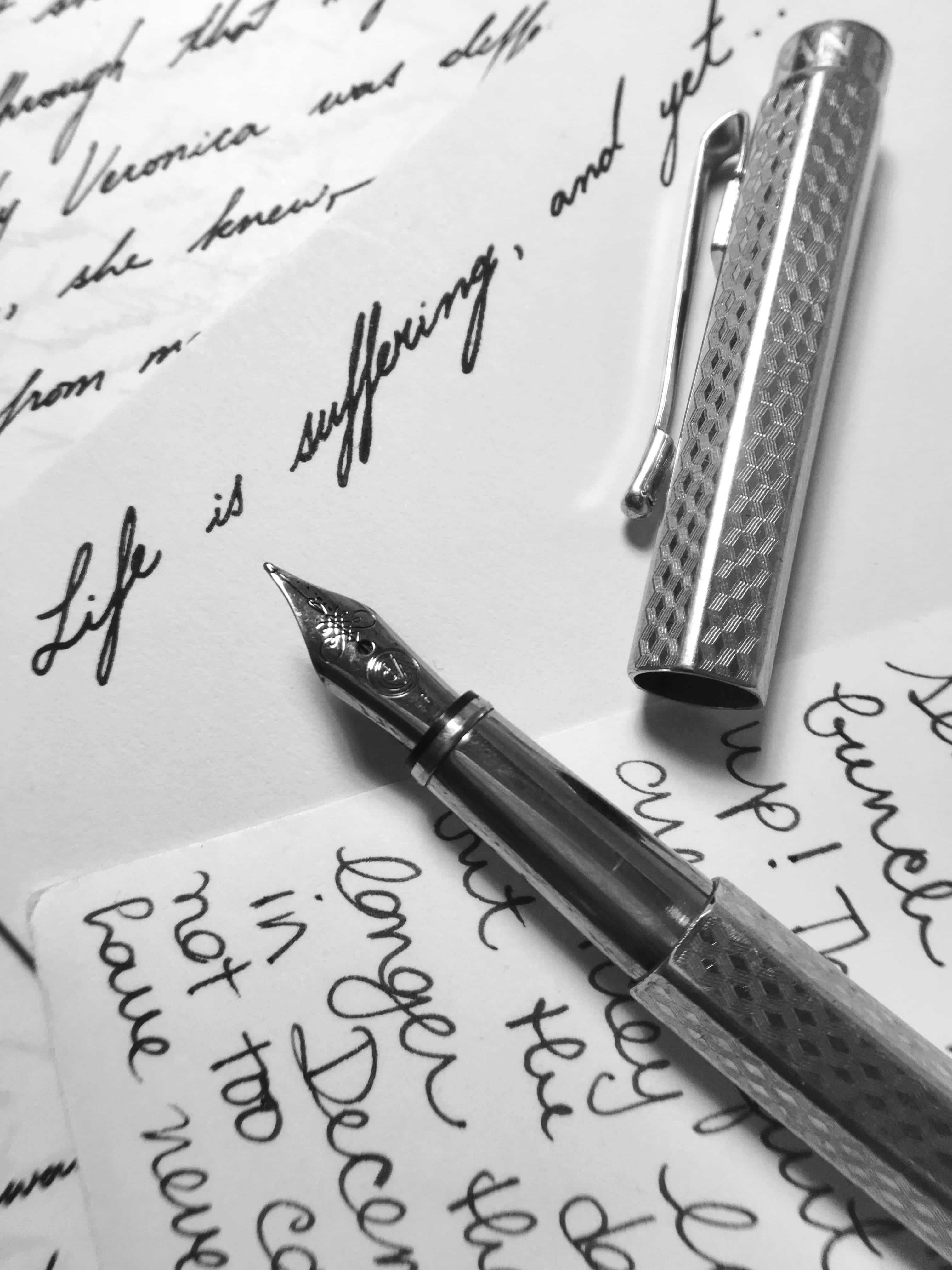Let your inspiration flow from a fountain pen

Buying a fountain pen revolutionized the way I write. If you write anything substantial by hand, do yourself a favour and upgrade from your ballpoint pen.
If you are a normal, well-adjusted law student (or even if you aren’t), then there is a good chance that you use a cheap, plasticky, ballpoint pen emblazoned with the trademark of some law-related entity, such as LexisNexis or the Toronto Lawyers Association. Click down the top or twist the shaft and the nib comes out; scribble a few rough, concentric circles to get the ink flowing and you are good to go. And when the pen runs out of ink, you simply throw it away. People are always handing more out at promotional events.
That all sounds alright, until you try a fountain pen. A fountain pen is like a ceramic mug to the ballpoint’s paper cup. The former offers little if any additional technology, but it performs at a higher level, more consistently, and for longer than its disposable counterpart. And, of course, you do the planet a service by reducing plastic waste. Fountain pens use fundamentally different technology to put ink on paper, which is ultimately responsible for their superior performance. There are three key differences to note. First, fountain pens convey ink through a channeled nib, rather than from an ink-coated ball. This offers three distinct advantages.
First, they offer immediate ink flow. There is none of this doodling and trying to warm up the ink; put the nib to your paper and you’re off. Second, nibs have variable ink flow, depending on how much you flex them. That may not seem terribly important for casual writing, but it is a useful quality for flourishes on signatures, especially if you normally use an extra-fine nib. However, the really great thing is that, unlike ballpoints, nibs require no hand pressure to write. If you have ever suffered from a sore hand during a particularly furious bout of exam writing, a fountain pen offers the perfect solution, because its nib just glides over the paper. The reason a nib can write so smoothly is that it is usually made of a hard metal with a high polish. Also, if you write with one nib long enough, it will wear to your particular movements. Moreover, the ink flows better, because it uses fully aqueous ink: pigment dissolve in water, rather than the sludgy mess that ballpoints use.
In addition, fountain pens hold their ink in relatively large, refillable reservoirs, as opposed to slender tubes. This has two special advantages. First it is easily refillable. So, you don’t have to throw away your pen when it’s empty. Although it is true that ballpoints are refillable, in that you can replace the cartridge, those cartridges are more difficult to find than fountain pen ink. Fountain pens can also take special cartridges—if you are planning to do some writing on a wilderness retreat, you don’t have to bring a large, glass bottle of ink with you. You can also change the colour of the ink. In fact, one of the joys of fountain pen ownership is the wide spectrum of colours available. Yes, you can find pink and lime green ink, but even in the more conservative ranges of the spectrum, you can find a colour to suit your particular taste. My go-to is Caran d’Ache Blue Sky, but there are so many wonderful hues.
By this point, you may be prepared to accept that the fountain pen sounds like a more pleasant writing experience, but you may also be suspicious of the total cost of ownership. In fact, you can buy a good fountain pen, like the Lamy Safari, for under $40. It is true that there are expensive pens, but their cost is explained at least in part by the materials from which they are made: gold, rhodium, silver, etc. And there are outrageously expensive pens, like the Montblanc Meisterstück 149, which costs about $1,000 and is made of “precious resin” (i.e. plastic). The thing to recognize is that a fountain pen is an investment. Take care of it and it will last for the rest of your life. So, you may justify spending a little more than you normally would on a pen to get one that really feels right in your hand.
Feel is the single most important thing when choosing a fountain pen, because, remember, you are looking for an improvement over the ballpoint experience. It is worth setting some time aside to visit a specialized stationary store to try out their pens. You will get a sense of what sort of weight you like, how a given pen balances in your hand, and how smoothly a particular nib writes. You might even fall in love. I certainly did.
If you plan to write your exams—or anything—by hand this year, treat yourself to something better than a ballpoint you picked up at an information session. Write the next chapter of your life with a fountain pen.





